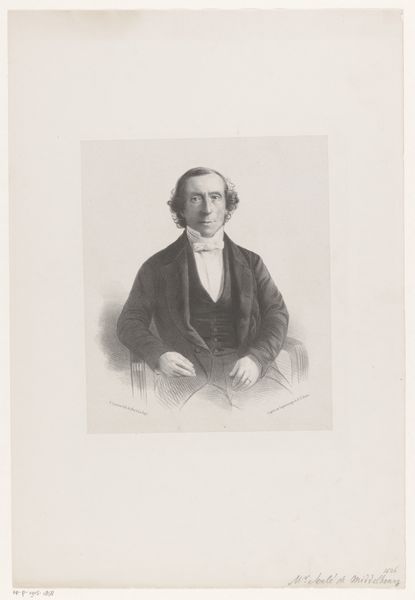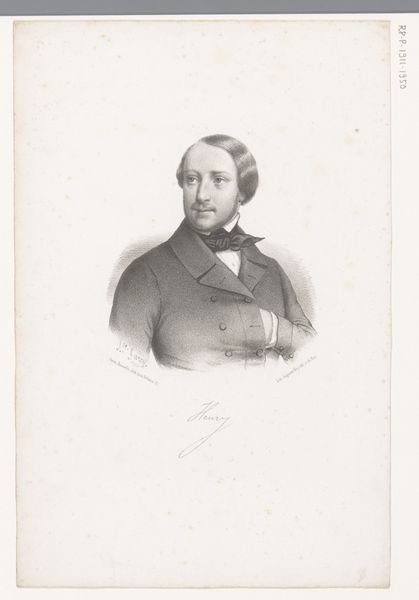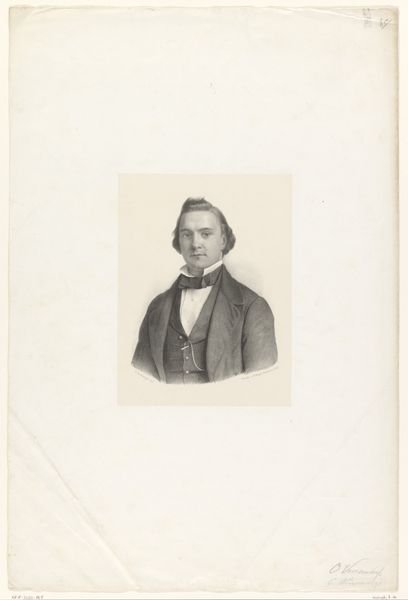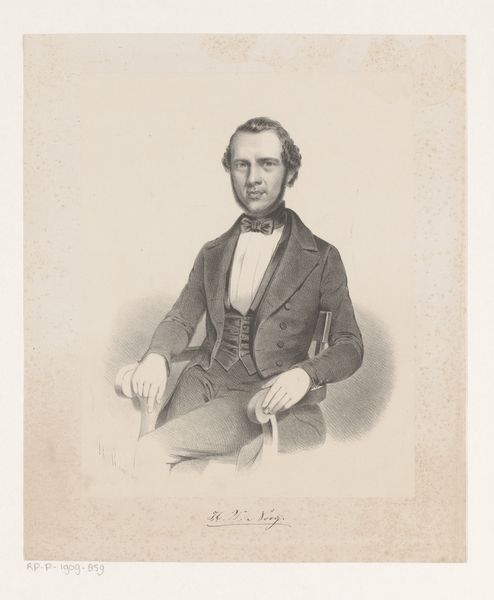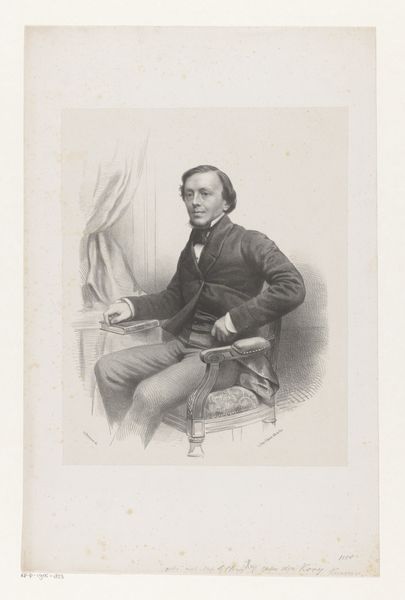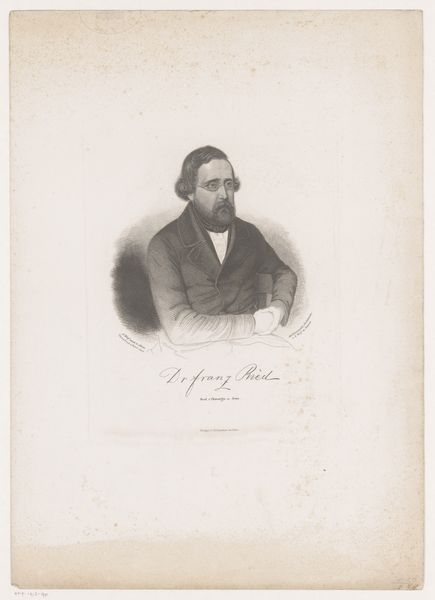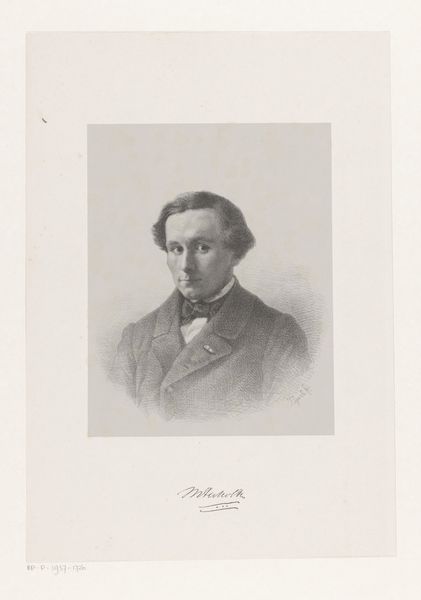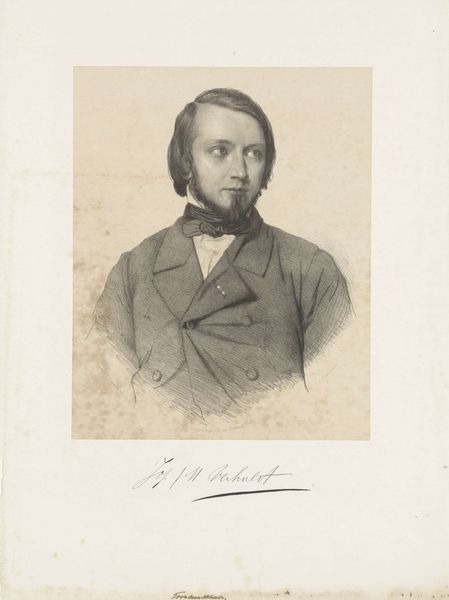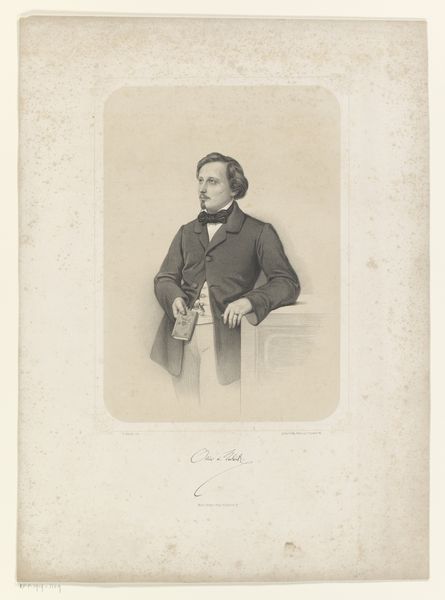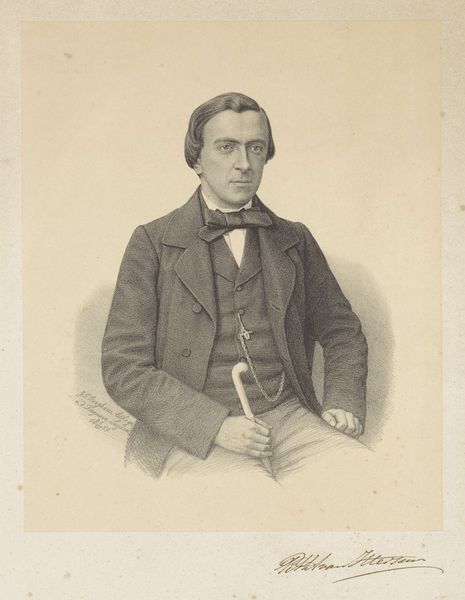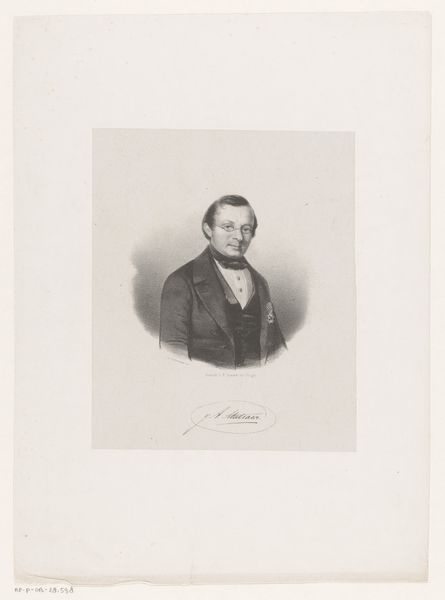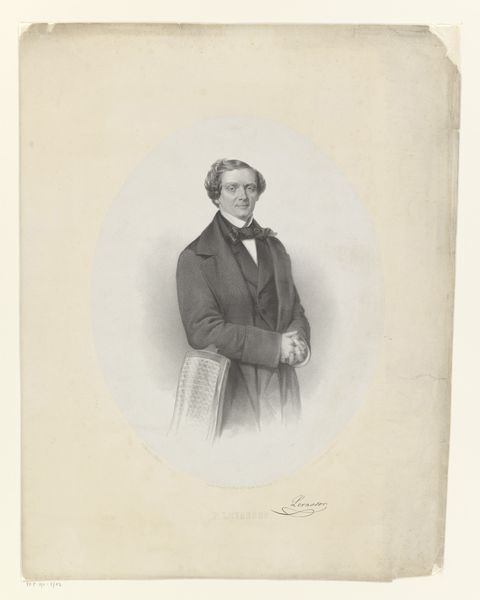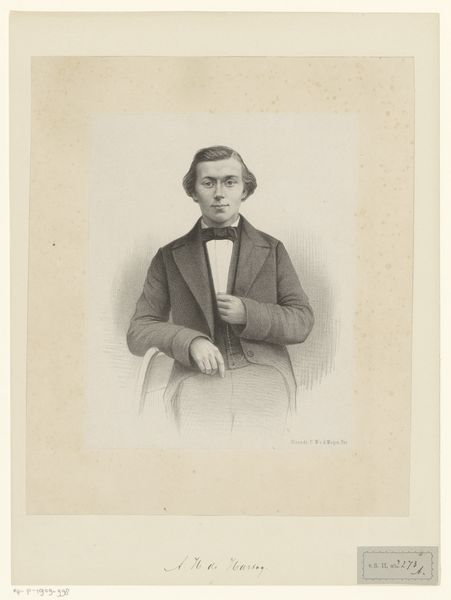
engraving
#
portrait
#
old engraving style
#
historical photography
#
history-painting
#
engraving
#
realism
Dimensions: height 276 mm, width 179 mm
Copyright: Rijks Museum: Open Domain
Curator: This is Alphonse Farcy’s “Portret van Jules Favre,” created in 1850 using engraving. The precision of the lines, capturing Favre’s likeness in such a detailed manner, always impresses me. Editor: It does have an intensity, a very sober presence. The darkness around the eyes is particularly striking; he seems burdened by something. I'm curious about the context. Engravings weren’t exactly quick to produce. Curator: Absolutely. Favre was a prominent French statesman and lawyer. Consider the laborious nature of engraving at the time. Every line etched, every shadow painstakingly built—it speaks to the value placed on his image. The realism achieved showcases mastery over materials. We can imagine the artisan meticulously working on the copper plate, controlling pressure and angle. Editor: I'm drawn to the formal aspects, yes, but even more to the symbols encoded in this image. Portraits of notable men are usually steeped in meanings. Look at the detail in the clothing, the subtle texture of the jacket. It conveys status, success. What symbols did Favre consciously want to portray to his peers, and to the people? Curator: Interesting! The carefully constructed identity definitely speaks volumes. Also, this technique makes us consider distribution networks. Engravings, unlike painted portraits, allowed for mass production and distribution. They amplified Favre’s image among the public, reinforcing his influence and reputation. Did this have something to do with material class? Editor: I think so. Beyond simply showing someone, images like this one can turn them into an idea. Looking at his clasped hands and pensive expression, I find a visual argument, an emphasis on intellectual power. Also note, this feels timeless due to his attire. Curator: That reminds me. I also think this is also more about industrial expansion and the production of paper in that era, and cheaper prints being created. Without those key changes to accessibility we simply couldn’t have this engraving distributed in the same way. Editor: True, true. Ultimately, what’s exciting is how this seemingly straightforward portrait operates as a vessel—it contains personal narrative, political ambition, but also industrial achievement. It's multilayered. Curator: A superb intersection of human ingenuity, symbolic communication, and manufacturing processes captured in a single engraving, truly an encapsulation of its time.
Comments
No comments
Be the first to comment and join the conversation on the ultimate creative platform.
